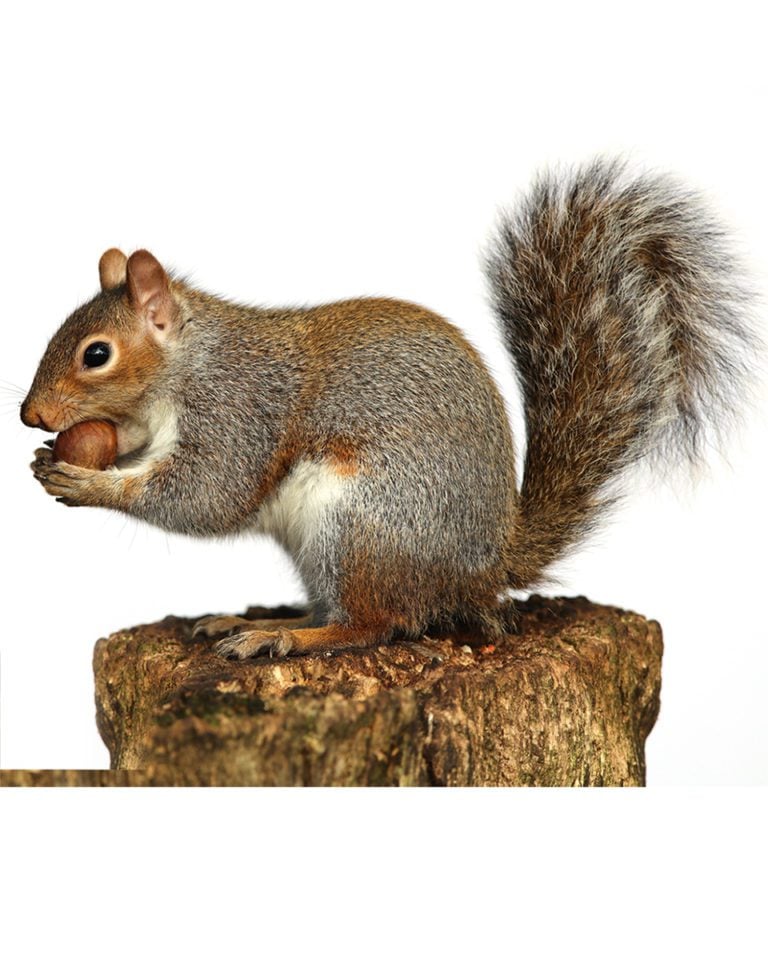Should we eat grey squirrels?
If you’re horrified by the idea of snacking on a hedgehog or a sprig of Japanese knotweed, maybe you should think again, says writer Lindsey Harrad. Left unchecked, these invasive species can wreck ecosystems, so perhaps it’s time to add grey squirrels to our diets instead…

Keen to do my bit for the local wildlife, I’ve made a hedgehog tunnel under my fence to allow free roaming. But while hedgehogs may be endangered and adored here, they’re less welcome on the isles of Uist in the Outer Hebrides. A few were introduced in the 1970s and adapted a little too well to island life, tucking into the eggs of protected ground-nesting birds. A controversial cull ensued, later replaced with an ongoing relocation project.
Invasive species
A non-native species can have a devastating effect on a new ecosystem, and it can be a costly problem to solve. Culling can provide food such as venison, so should we be putting Hebridean hedgehog on the menu? They were eaten in Europe in the Middle Ages, and in some traveller communities there’s still a tradition of clay-baking hedgehogs in the fire. Hedgehog might not be to your taste (it’s not to mine either), but the rationale for why some animals become protected or pets and others end up on our plates has never been entirely logical. My children lavish love on their guinea pigs, but in Ecuador they’re served with peanut sauce.
Countries with a tradition of eating foods Westerners might find repellent, such as rats, bats or dogs, often do so because they’re plentiful pests that provide cheap meat. In the UK, invasive grey squirrels, those charming rogues, have decimated our native red squirrel population. In the US, squirrel is a popular game meat. Hugh Fearnley-Whittingstall has served squirrel at River Cottage, while Silo, the zero-waste restaurant in east London, recently put it on the menu with invasive American signal crayfish and Japanese knotweed (pleasantly asparagus-tasting) as a ‘radical act of sustainability’.
“Why some animals become pets and others end up on our plates has never been logical. My children lavish love on their guinea pigs, but in Ecuador they’re served with peanut sauce.”
Embracing sustainable ingredients
Eating invasive species isn’t without possible downsides. There’s a risk that demand will lead to commercial production – as with rabbit and pigeon in France. Could squirrel hunts become a thing? Or a black market spring up for Japanese knotweed, which spreads like wildfire, driving gardeners mad.
Many ecologists believe putting invasive species on the plate downplays their catastrophic impact, arguing only draconian measures can eradicate them. But you could also argue it’s hypocritical of us, the most invasive and destructive species of all, to condemn these tenacious survivors, especially as most are transplanted in the first place through human activity.
In the end, though, creating a more resilient food supply in the face of climate change may require us to embrace more sustainable and wild ingredients. And while I can’t see peri peri squirrel appearing at Nando’s any time soon, I’m all for getting on board: if the alternative is asparagus flown in from Peru, I’ll happily eat stir-fried Japanese knotweed.
Lindsey is the author of Living Plantfully (Welbeck Balance £16.99). Follow her @livemoreplantfully
Subscribe to our magazine
Food stories, skills and tested recipes, straight to your door... Enjoy 5 issues for just £5 with our special introductory offer.
Subscribe
Unleash your inner chef
Looking for inspiration? Receive the latest recipes with our newsletter